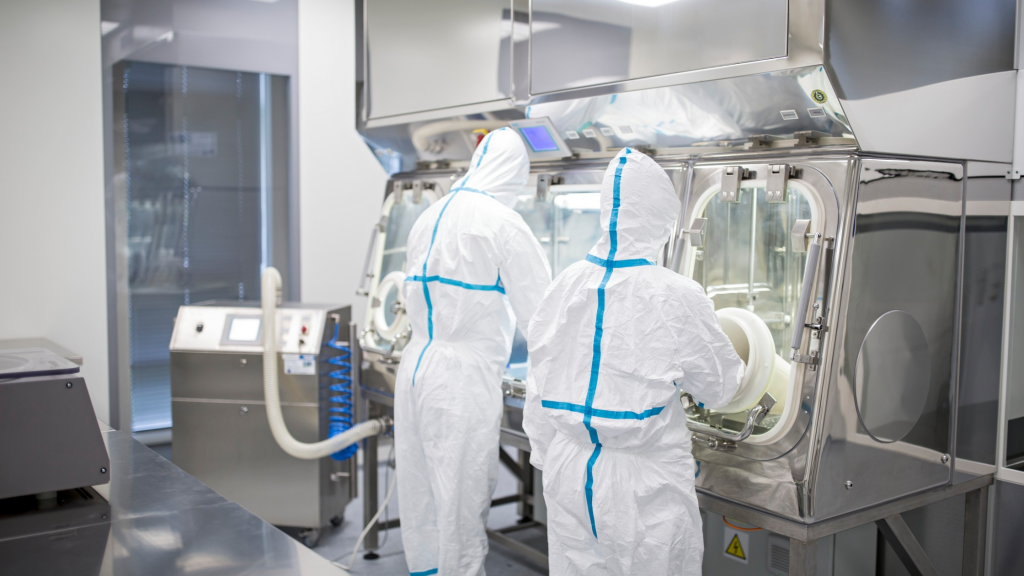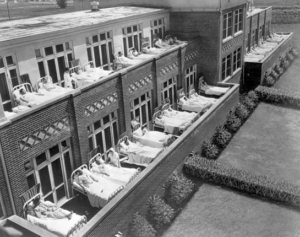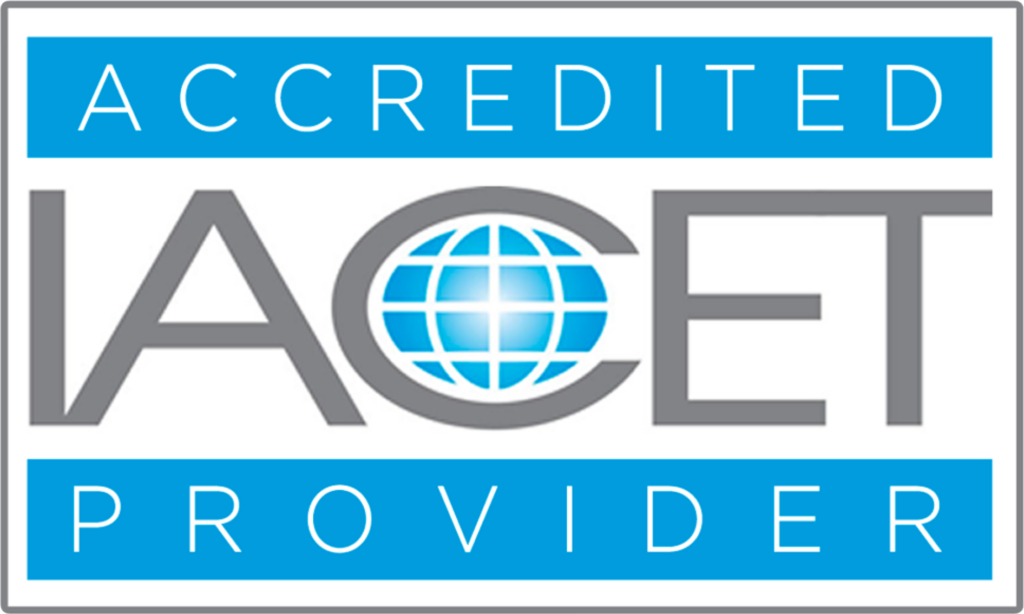
Pressure Decay Testing and Why It is Important in BSL-4 Laboratory Annual Verification Testing
July 26, 2023
What is Pressure Decay Testing?
Pressure decay testing is a systematic procedure to validate room construction to determine if the laboratory’s containment barrier defined by walls, floors, ceilings, penetrations, and other construction features meet the required integrity to prevent leakage of unfiltered air from the BSL-4 containment space. Pressure decay testing is the most reliable method to prove that a BSL-4 laboratory room’s envelope is airtight. The National Institutes of Health, which oversees the operation of the BSL-4 laboratories located in Fort Detrick, Maryland, and Hamilton, Montana, indicates that the standard BSL-4 pressure testing method is to negatively pressurize the room to 2 InH2O, and then measure the pressure decay. The requirement for a BSL-4 laboratory is to maintain a pressure higher than 1 InH2O after 20 minutes (Memarzadeh, 2009). This quantifiable test can pinpoint issues with critical equipment in a BSL-4 laboratory including:
- Air distribution valves
- Isolation dampers and actuators
- Isolation dampers bioseals
- APR doors gaskets
- Barrier autoclaves gaskets and seals
- Breathing air system lines
- Laboratory vents
Why is Pressure Decay Testing Important?
Pressure decay testing provides an acceptable level of quality for annual verification testing of BSL-3 Ag and BSL-4 laboratories. The complex design and operation of these facilities minimize the potential risk of an aerosolized pathogen to staff, the general population, and the surrounding environment. The pressure decay test verifies that there is no air leakage. Air leakage can compromise research studies through cross-contamination of multiple pathogens.
How to Prepare for Pressure Decay Testing?
The following steps must occur before conducting a pressure decay test:
- Verify the facility’s HVAC system is operational and commissioned.
- Verify the building automation system (BAS) is operational.
- Provisions for setting up testing equipment are available (pressure transducer enclosures, decontamination ports, etc.)
- Use either testing vacuum pump or exhaust system to negatively pressurize the system up to 2.00 InH2O.
- Check all potential sources of leakage for audible or identifiable leakage.
- To the extent practical, eliminate/minimize potential sources of heat generation so that the space stays at a relatively constant temperature throughout the testing (lights, freezers, motors, etc.)
- Isolate the affected areas from pressure fluctuations that will affect the testing.
- Monitor room Differential Pressures (DP) with static conditions (no airflow or pressurization air) to ensure that there are no external effects that will invalidate the results.
- All plumbing fixtures and floor drain traps are filled with water.
- If previously identified, all construction deficiencies have been rectified and completed.
- Ensure no visible damage is apparent to the room under test.
- All conduit, wiring, and electrical boxes have been epoxy-sealed.
- All epoxy coatings (if epoxy coatings are present) are in place and free of visible defects.
- Seamless flooring is in place and free of visible defects.
- Check valves and isolation valves are in place and operational.
- Dunk tanks (if installed) are filled.
- Autoclaves are operational and have their seal barriers in place.
- APR doors are functional and interface to BAS, and door access control systems are operational.
- Room temperatures are measured and data logged. Changes in temperature cause changes in pressure.
- Atmospheric pressure is measured using an instrument with an accuracy of 0.01 In. Hg. which is equivalent to 33.86 Pa or .136 InH2O.
- A pressure decay test form has been generated.
- It has been confirmed that room and general laboratory conditions are acceptable for testing the laboratory.
- The subject test area should be isolated and then allowed to stand for 20 minutes before commencing the test.
Acceptance Criteria
The room passes the pressure decay test if the residual pressure at the end of the 20-minute period is -1.00 InH2O or more negative (50% of the initial room’s pressure value) under steady state conditions for temperature and barometric pressure. Each pressure zone within maximum containment (BSL-4) must pass two consecutive pressure decay tests.
If Pressure Decay Testing Is Not Feasible
If annual pressure decay testing is not feasible for some rooms, then another option would be conducting a smoke saturation test. A smoke saturation test is a qualitative test, but it will help the users to identify possible issues with the containment envelope. The maximum containment engineering/maintenance team will need to command the laboratory into maintenance or decontamination mode. The surrounding areas will be more negative; therefore, if there is a leak or issue during the testing, the maximum containment team will be able to identify it. The challenge with this method is that it is only recommended if the rooms are decontaminated.
Another option (a little bit messy and more time-consuming) is the use of a soap solution on critical areas. This test is the least accurate option because it will only test perimeter barrier components. The laboratory will require decontamination prior to testing.
“Light Pressure Decay Test”
If there is a decontamination or maintenance mode for the facility, you can run what we call a “light pressure decay test.” Before a decontamination process begins, you need to make sure the laboratory is airtight. The light pressure decay test is typically conducted from the BAS for testing and running trends. No additional testing equipment is used. This is a non-invasive procedure.
What About BSL-3 Laboratories?
BSL-3 laboratories can be pressure decay tested depending on the laboratory’s envelope construction system, calculated room’s leakage rate, and room’s isolation capabilities. Pressure decay testing on BSL-3 laboratories is more challenging since, by concept, these types of laboratories are considered “leaky labs” (infiltration of air is required). However, with the implementation of good room isolation standard operating procedures, the pressure decay test can be achieved with no issues.
Recommendations
Pressure decay testing is a team effort. Our recommendations to have a successful pressure decay test include:
- Make sure to get involved with experienced staff and a third-party consultant such as World BioHazTec from the beginning. Pressure decay testing is a critical testing procedure that requires experience and knowledge of BSL-4 and BSL-3 laboratories.
- Pressure decay testing should not be rushed. It requires coordination and is a team effort that involves the biosafety officer, Responsible Official, Alternate Responsible Official, facility director, facility personnel, and contractors.
- Differential pressure meters and test equipment calibration must be current and traceable to NIST.
- Check and double-check items which could inadvertently affect the testing outcome.
- If room or atmospheric conditions are not stable, such as a thunderstorm, do not hesitate to reschedule the test.
If you would like to learn more about pressure decay testing, contact World BioHazTec for a free consultation or send us an email.
Works Cited
Farhad Memarzadeh (2009, September 15). Pressure and Temperature Correction for BSL4-Pressure Decay Test. (O. o. National Institutes of Health, Producer) Retrieved 2023, from Pressure and Temperature Correction for BSL4-Pressure Decay Test: https://orf.od.nih.gov/TechnicalResources/Bioenvironmental/Documents/PressureandTemperatureCorrectionforBSL4_508.pdf







